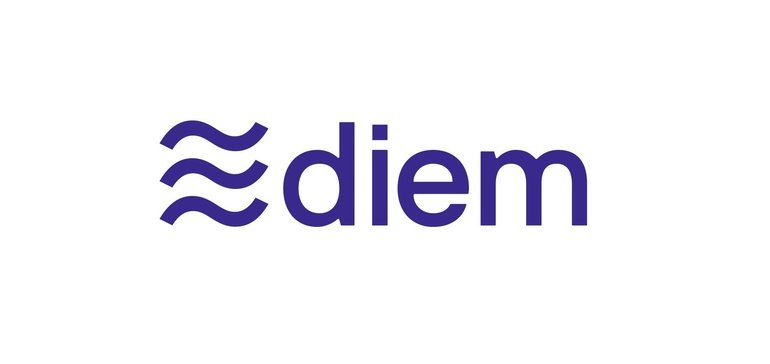TECHNOLOGY
Crypto 101: What is Cryptocurrency and is it safe to buy?

Cryptocurrency has entered the mainstream and if you feel like you’re way behind, you’re not alone.
TAMPA, Fla. — At Florida’s Bitcoin and Blockchain Summit earlier this month (which was held here in Tampa) Mayor Jane Castor announced she was going to take her next paycheck in bitcoin.
Miami and New York’s mayors recently did the same.
Over in Los Angeles, the Staples Center, one of the world’s most famous arenas, will get its name changed to “Crypto.com Arena” come Christmas Day, for a reported $700 million.
Apologies for coming late to the conversation – we’ve been busy preparing for today’s cryptocurrency conference here in the @CityofTampa. 🪙😏 But I’m certainly up for the challenge! #ForbesTopEmergingTechnologyCity #FloridasTechCapitol #TechTown
— Jane Castor (@JaneCastor) November 5, 2021
Cryptocurrency has entered the mainstream and if you feel like you’re way behind, you’re not alone. But, all of this Bitcoin and crypto talk can be a heck of a lot for us newbies to the coin game, even if it has been around for more than a decade.
So, let’s learn together. It’s a journey I like to call: Crypto 101.
To make this easier, we’ll break it down into four parts:
- What is cryptocurrency?
- How can I buy it?
- How safe is it?
- Am I too late to the game to get in?
What is cryptocurrency?
Bitcoin, Blockchain, Coinbase, Etherium, To the Moon – it’s all a part of the crypto vernacular, but let’s get down to the basics.
In simplistic terms, it’s essentially a peer-to-peer digital cash system that’s decentralized, so it doesn’t go through any bank, government or third party, like how we’d traditionally use cash or a credit card.
“Cryptocurrency, very simply, is just a digital or virtual currency that’s secured by code, which makes it nearly impossible to counterfeit,” said Nick Agar, the founder of AXIA, an ecosystem and non-profit for hyper deflationary virtual currency.
“These currencies run on something called a blockchain, which is a distributed ledger where these transactions are being tracked. What makes them that much more secure is they have to go through a proper validation process.”
And that process is called mining, which verifies the transaction via sophisticated computers solving very complex math problems.
“In bitcoin, all of these miners are processing the transaction, which is ultimately securing the network and making sure all the transactions are secure,” said Mark Palomba, the founder and chief investment officer at Deltacore Capital, a hedge fund for digital assets based here in Tampa.
“In return, they get newly minted bitcoin.”
Najah Roberts, the chief visionary officer of a crypto services company called Crypto Blockchain Plug, likened it to what we’re already doing with digital payments, like Apple Pay or Venmo.
“Money is changing,” Roberts said. “We’re already in the digital space…this is just one step further, which is a digital currency, such as bitcoin. I tell people to get knowledgeable about Bitcoin first.”
So let’s do that because there are thousands of cryptocurrencies, but Bitcoin is the most popular and the most lucrative. It’s like the McDonald’s of crypto.
Satoshi Nakamoto created bitcoin in 2009. He wanted an independent way for users to send money to each other – fast and with little to no transaction fee.
“There will only be 21 million bitcoins ever in existence,” Palomba said. “They are slowly trickled into the flow of the system by miners, decreasing every four years until 2141.”
So, they’re limited and clearly in demand, with Bitcoin exploding over the last decade. CaseBitcoin says its 10-year compounded growth rate is unmatched in financial history, nearly tripling your money every year for a decade.
How can I buy it?
Okay, so now I’ve got your interest, but how do you buy, trade or sell crypto, like Bitcoin?
“Always make sure you’re using a trusted exchange with a lot of security,” Palomba said. “In the U.S., the biggest exchange is Coinbase, which is the quickest and easiest way for beginners to get into the market.”
“Similar to when you open a bank account,” Agar said. “You go through a registration process at one of these exchanges and then you receive one of these cryptocurrency wallets to go into the market and purchase whatever crypto you want at that time.”
How safe is it?
So, now that you know how to buy some, how safe is it?
The Federal Trade Commission says consumers lost north of $80 million on crypto scams during the back end of 2020 and the first quarter of 2021, but experts say that has more to do with a lack of research and knowledge than it does with the crypto process itself.
Blockchain technology is known for its unparalleled security. The user has their identity protected, but all transactions are public, making it nearly impossible to hack or cheat the system. With thousands of miners keeping track of the transactions and showing proof of their work to get paid, it increases the security.
“We should actually be looking to crypto as a far, far more secure way to make our payments,” Agar said. “Because of the immutable nature of blockchain transactions and because they’re so transparent on that ledger at all times.”
“Anybody that’s talking about massive gains, immediately you have to put up your red flags,” Roberts said. “I meet so many people who are scammed in this space and they don’t know better. The moment you begin to get greedy, that’s the time you begin to get scammed.”
Is it too late to get in?
We’re a decade in, so is it too late to get into the crypto game, or are we just getting started?
“This is a marketplace that’s in its infancy,” Agar said. “We’re almost at an inflection point in our economic system in terms of what is possible.”
“The sky is the limit,” Palomba said. “We’re only scratching the surface on the technology and the tools and the solutions that this can really offer. In 5-10 years, I don’t think we’ll recognize a lot of the difference that it’ll make in how we transact and do things on the internet.”
TECHNOLOGY
Next-gen chips, Amazon Q, and speedy S3

AWS re:Invent, which has been taking place from November 27 and runs to December 1, has had its usual plethora of announcements: a total of 21 at time of print.
Perhaps not surprisingly, given the huge potential impact of generative AI – ChatGPT officially turns one year old today – a lot of focus has been on the AI side for AWS’ announcements, including a major partnership inked with NVIDIA across infrastructure, software, and services.
Yet there has been plenty more announced at the Las Vegas jamboree besides. Here, CloudTech rounds up the best of the rest:
Next-generation chips
This was the other major AI-focused announcement at re:Invent: the launch of two new chips, AWS Graviton4 and AWS Trainium2, for training and running AI and machine learning (ML) models, among other customer workloads. Graviton4 shapes up against its predecessor with 30% better compute performance, 50% more cores and 75% more memory bandwidth, while Trainium2 delivers up to four times faster training than before and will be able to be deployed in EC2 UltraClusters of up to 100,000 chips.
The EC2 UltraClusters are designed to ‘deliver the highest performance, most energy efficient AI model training infrastructure in the cloud’, as AWS puts it. With it, customers will be able to train large language models in ‘a fraction of the time’, as well as double energy efficiency.
As ever, AWS offers customers who are already utilising these tools. Databricks, Epic and SAP are among the companies cited as using the new AWS-designed chips.
Zero-ETL integrations
AWS announced new Amazon Aurora PostgreSQL, Amazon DynamoDB, and Amazon Relational Database Services (Amazon RDS) for MySQL integrations with Amazon Redshift, AWS’ cloud data warehouse. The zero-ETL integrations – eliminating the need to build ETL (extract, transform, load) data pipelines – make it easier to connect and analyse transactional data across various relational and non-relational databases in Amazon Redshift.
A simple example of how zero-ETL functions can be seen is in a hypothetical company which stores transactional data – time of transaction, items bought, where the transaction occurred – in a relational database, but use another analytics tool to analyse data in a non-relational database. To connect it all up, companies would previously have to construct ETL data pipelines which are a time and money sink.
The latest integrations “build on AWS’s zero-ETL foundation… so customers can quickly and easily connect all of their data, no matter where it lives,” the company said.
Amazon S3 Express One Zone
AWS announced the general availability of Amazon S3 Express One Zone, a new storage class purpose-built for customers’ most frequently-accessed data. Data access speed is up to 10 times faster and request costs up to 50% lower than standard S3. Companies can also opt to collocate their Amazon S3 Express One Zone data in the same availability zone as their compute resources.
Companies and partners who are using Amazon S3 Express One Zone include ChaosSearch, Cloudera, and Pinterest.
Amazon Q
A new product, and an interesting pivot, again with generative AI at its core. Amazon Q was announced as a ‘new type of generative AI-powered assistant’ which can be tailored to a customer’s business. “Customers can get fast, relevant answers to pressing questions, generate content, and take actions – all informed by a customer’s information repositories, code, and enterprise systems,” AWS added. The service also can assist companies building on AWS, as well as companies using AWS applications for business intelligence, contact centres, and supply chain management.
Customers cited as early adopters include Accenture, BMW and Wunderkind.
Want to learn more about cybersecurity and the cloud from industry leaders? Check out Cyber Security & Cloud Expo taking place in Amsterdam, California, and London. Explore other upcoming enterprise technology events and webinars powered by TechForge here.
TECHNOLOGY
HCLTech and Cisco create collaborative hybrid workplaces

Digital comms specialist Cisco and global tech firm HCLTech have teamed up to launch Meeting-Rooms-as-a-Service (MRaaS).
Available on a subscription model, this solution modernises legacy meeting rooms and enables users to join meetings from any meeting solution provider using Webex devices.
The MRaaS solution helps enterprises simplify the design, implementation and maintenance of integrated meeting rooms, enabling seamless collaboration for their globally distributed hybrid workforces.
Rakshit Ghura, senior VP and Global head of digital workplace services, HCLTech, said: “MRaaS combines our consulting and managed services expertise with Cisco’s proficiency in Webex devices to change the way employees conceptualise, organise and interact in a collaborative environment for a modern hybrid work model.
“The common vision of our partnership is to elevate the collaboration experience at work and drive productivity through modern meeting rooms.”
Alexandra Zagury, VP of partner managed and as-a-Service Sales at Cisco, said: “Our partnership with HCLTech helps our clients transform their offices through cost-effective managed services that support the ongoing evolution of workspaces.
“As we reimagine the modern office, we are making it easier to support collaboration and productivity among workers, whether they are in the office or elsewhere.”
Cisco’s Webex collaboration devices harness the power of artificial intelligence to offer intuitive, seamless collaboration experiences, enabling meeting rooms with smart features such as meeting zones, intelligent people framing, optimised attendee audio and background noise removal, among others.
Want to learn more about cybersecurity and the cloud from industry leaders? Check out Cyber Security & Cloud Expo taking place in Amsterdam, California, and London. Explore other upcoming enterprise technology events and webinars powered by TechForge here.
TECHNOLOGY
Canonical releases low-touch private cloud MicroCloud

Canonical has announced the general availability of MicroCloud, a low-touch, open source cloud solution. MicroCloud is part of Canonical’s growing cloud infrastructure portfolio.
It is purpose-built for scalable clusters and edge deployments for all types of enterprises. It is designed with simplicity, security and automation in mind, minimising the time and effort to both deploy and maintain it. Conveniently, enterprise support for MicroCloud is offered as part of Canonical’s Ubuntu Pro subscription, with several support tiers available, and priced per node.
MicroClouds are optimised for repeatable and reliable remote deployments. A single command initiates the orchestration and clustering of various components with minimal involvement by the user, resulting in a fully functional cloud within minutes. This simplified deployment process significantly reduces the barrier to entry, putting a production-grade cloud at everyone’s fingertips.
Juan Manuel Ventura, head of architectures & technologies at Spindox, said: “Cloud computing is not only about technology, it’s the beating heart of any modern industrial transformation, driving agility and innovation. Our mission is to provide our customers with the most effective ways to innovate and bring value; having a complexity-free cloud infrastructure is one important piece of that puzzle. With MicroCloud, the focus shifts away from struggling with cloud operations to solving real business challenges” says
In addition to seamless deployment, MicroCloud prioritises security and ease of maintenance. All MicroCloud components are built with strict confinement for increased security, with over-the-air transactional updates that preserve data and roll back on errors automatically. Upgrades to newer versions are handled automatically and without downtime, with the mechanisms to hold or schedule them as needed.
With this approach, MicroCloud caters to both on-premise clouds but also edge deployments at remote locations, allowing organisations to use the same infrastructure primitives and services wherever they are needed. It is suitable for business-in-branch office locations or industrial use inside a factory, as well as distributed locations where the focus is on replicability and unattended operations.
Cedric Gegout, VP of product at Canonical, said: “As data becomes more distributed, the infrastructure has to follow. Cloud computing is now distributed, spanning across data centres, far and near edge computing appliances. MicroCloud is our answer to that.
“By packaging known infrastructure primitives in a portable and unattended way, we are delivering a simpler, more prescriptive cloud experience that makes zero-ops a reality for many Industries.“
MicroCloud’s lightweight architecture makes it usable on both commodity and high-end hardware, with several ways to further reduce its footprint depending on your workload needs. In addition to the standard Ubuntu Server or Desktop, MicroClouds can be run on Ubuntu Core – a lightweight OS optimised for the edge. With Ubuntu Core, MicroClouds are a perfect solution for far-edge locations with limited computing capabilities. Users can choose to run their workloads using Kubernetes or via system containers. System containers based on LXD behave similarly to traditional VMs but consume fewer resources while providing bare-metal performance.
Coupled with Canonical’s Ubuntu Pro + Support subscription, MicroCloud users can benefit from an enterprise-grade open source cloud solution that is fully supported and with better economics. An Ubuntu Pro subscription offers security maintenance for the broadest collection of open-source software available from a single vendor today. It covers over 30k packages with a consistent security maintenance commitment, and additional features such as kernel livepatch, systems management at scale, certified compliance and hardening profiles enabling easy adoption for enterprises. With per-node pricing and no hidden fees, customers can rest assured that their environment is secure and supported without the expensive price tag typically associated with cloud solutions.
Want to learn more about cybersecurity and the cloud from industry leaders? Check out Cyber Security & Cloud Expo taking place in Amsterdam, California, and London. Explore other upcoming enterprise technology events and webinars powered by TechForge here.
-

 WORDPRESS6 days ago
WORDPRESS6 days agoTurkish startup ikas attracts $20M for its e-commerce platform designed for small businesses
-

 PPC7 days ago
PPC7 days ago31 Ready-to-Go Mother’s Day Messages for Social Media, Email, & More
-

 PPC6 days ago
PPC6 days agoA History of Google AdWords and Google Ads: Revolutionizing Digital Advertising & Marketing Since 2000
-

 MARKETING5 days ago
MARKETING5 days agoRoundel Media Studio: What to Expect From Target’s New Self-Service Platform
-

 SEO5 days ago
SEO5 days agoGoogle Limits News Links In California Over Proposed ‘Link Tax’ Law
-

 MARKETING6 days ago
MARKETING6 days agoUnlocking the Power of AI Transcription for Enhanced Content Marketing Strategies
-

 SEARCHENGINES6 days ago
SEARCHENGINES6 days agoGoogle Search Results Can Be Harmful & Dangerous In Some Cases
-
SEARCHENGINES5 days ago
Daily Search Forum Recap: April 12, 2024












You must be logged in to post a comment Login